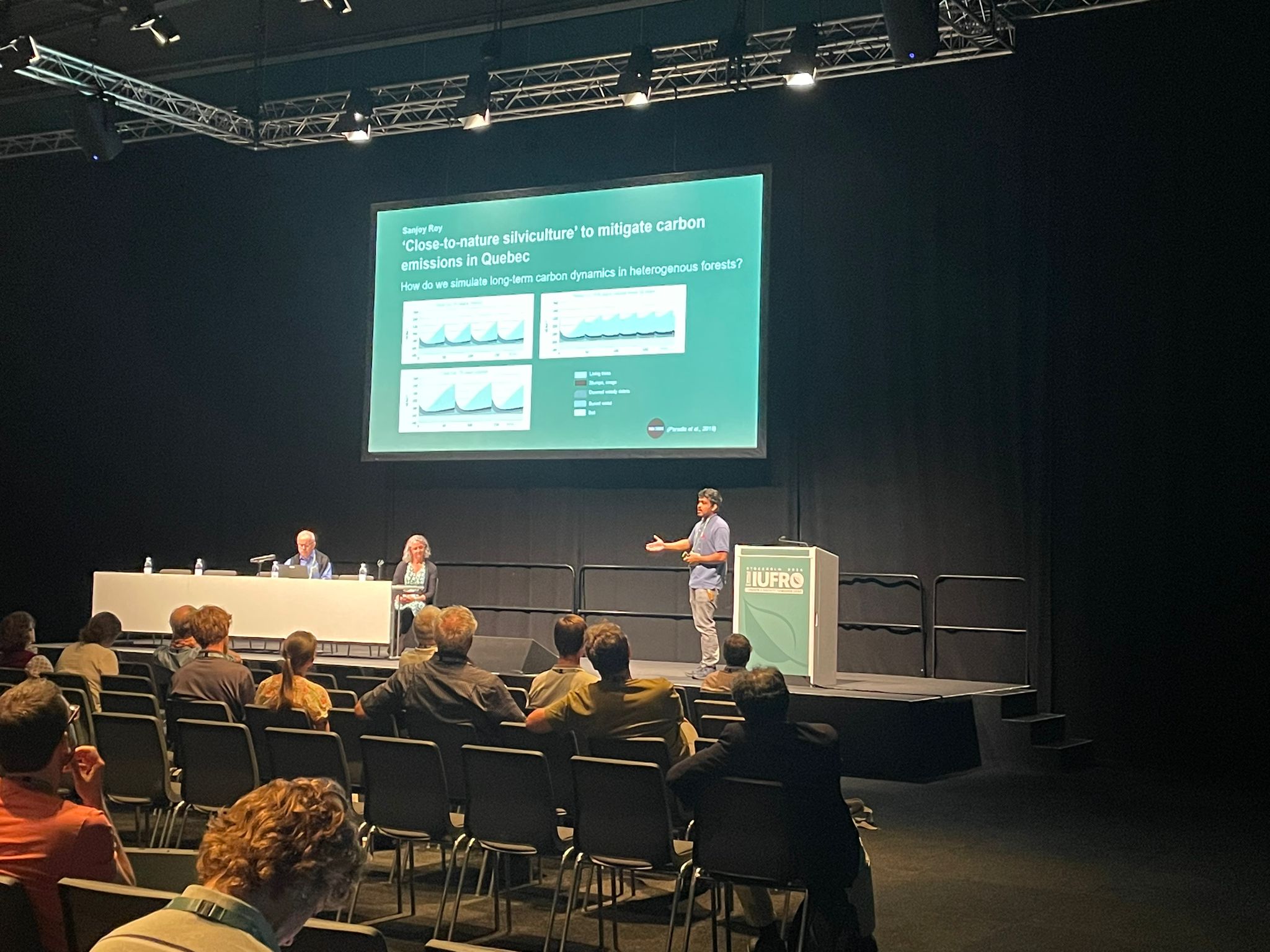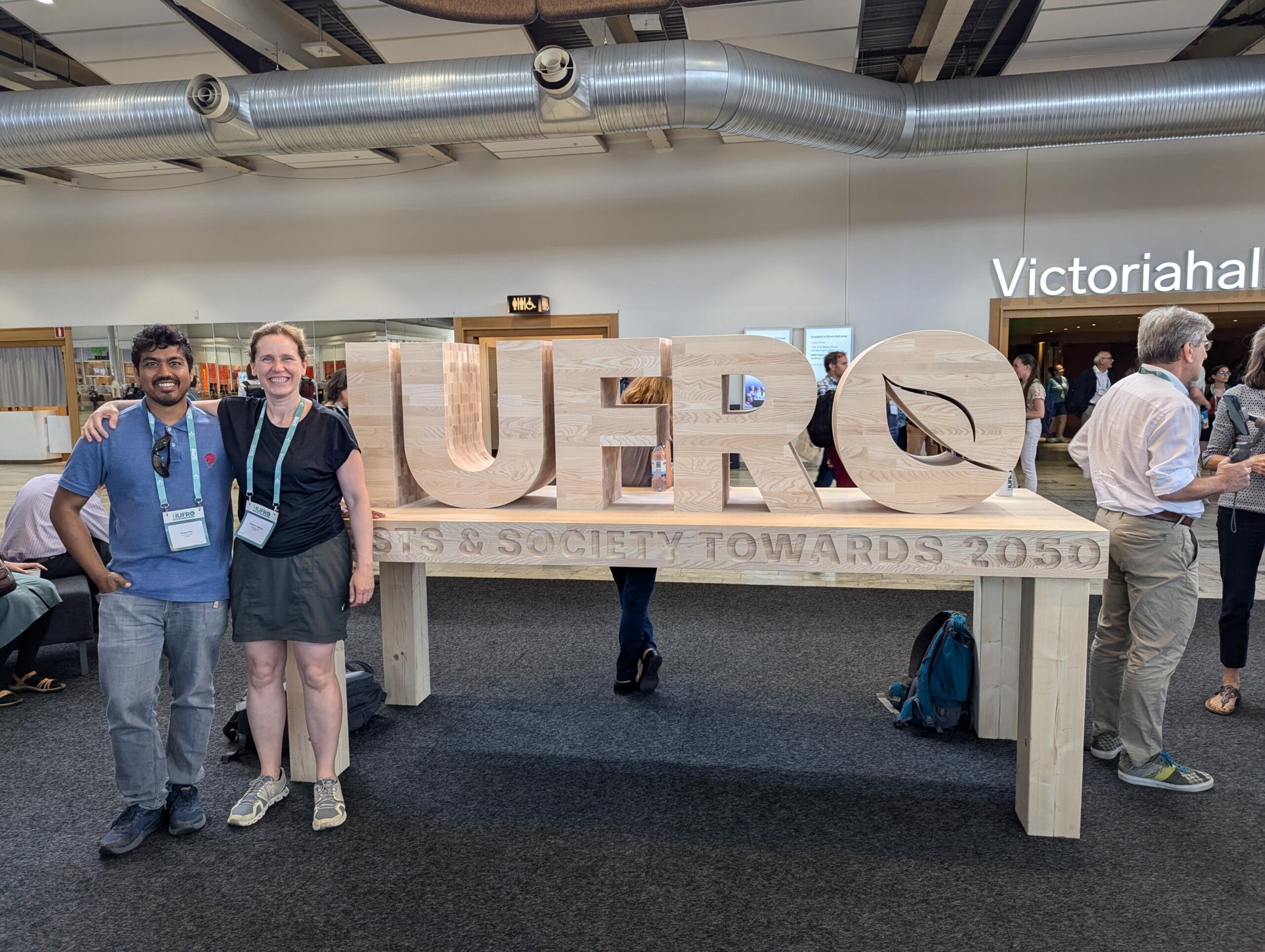Participation of Sanjoy Roy at the « IUFRO World Congress 2024 »!
Sanjoy Roy, PhD student in forestry sciences under the supervision of Evelyne Thiffault, had the opportunity to participate in the «IUFRO World Congress 2024», held June 23-29, 2024 in Stockholm (Sweden). The conference provides a global forum for the exchange of knowledge, perspectives and visions between scientists from a wide range of disciplines, as well as for dialogue with young people, policy-makers, forest managers, business representatives, and civil society organisations. Climate change, biodiversity loss, environmental pollution and growing social injustice are among the most serious crises facing the world today. Addressing these interconnected crises requires decisive and equitable action, with everyone taking responsibility within their own sphere of influence.
At this event, Sanjoy presented his innovative research on the «Evaluating ‘close to nature silviculture’ for mitigating carbon emissions in the Balsam Fir-White Birch forests in Quebec under climate change». His work involves comparing the stand carbon and regeneration dynamics between conventional regular structure and irregular continuous-cover practices for both short-and long terms in the balsam fir-white birch bioclimatic domain of Quebec.
This opportunity enabled Sanjoy to share his discoveries and scientific advances with an international audience of researchers, engineers and industry professionals. Through his oral presentation, Sanjoy was able not only to disseminate his research results, but also to receive constructive feedback from his peers. He also strengthened his skills and broadened his professional network.
The CRMR’s student mobility program and the financial Aid Program of the CEF for dissemination of research and internships provided crucial financial support, making this enriching experience possible.Thanks to this support, Sanjoy was able to represent his institution and play an active role in the advancement of research in his field.
Congratulations to Sanjoy on this achievement, and we wish him every success in his academic and professional career!

Titre of presentation : Evaluating ‘close to nature silviculture’ for mitigating carbon emissions in the Balsam Fir-White Birch forests in Quebec under climate change
Abstract: Over-simplification of forest structure due to the use of clear-cutting practices in recent decades in Quebec has raised concerns about future forest resilience and carbon dynamics in the context of climate change. Continuous-canopy silviculture is being studied to improve carbon dynamics by increasing forest resilience to climate change and future disturbances, as well as favoring regeneration of conifer seedlings over thermophilic broadleaf seedlings.
This study aims to compare stand carbon and regeneration dynamics between conventional regular structure and irregular continuous-cover practices for both short-and-long terms in the balsam fir-white birch bioclimatic domain of Quebec. We will use the spatially explicit process-based model ‘HETEOFOR’ to do this. We will then use CBM-CFS3 and its Forest Harvested Wood Products module to track the carbon dynamics from the ecosystem to the harvested wood products. In the short term, we expect that the regeneration of thermophilous broadleaf species will be proportional to the intensity of the partial cuts used in irregular continuouscover practices. However, with multiple successional rotations and assuming the overstory gap occupancy from remaining trees, it will ultimately favor balsam fir seedlings in the long term. Carbon sequestration (in terms of CO2-equivalent) is expected to increase in the long term in irregular continuous cover practices over regular clear-cut practices.
The carbon storage in wood products is also expected to be higher in continuous cover silviculture because of the advantage of tree selection and considering the wood substitution effect. We further hypothesize that the forest will remain a net carbon sink under continuous cover practices. In contrast, under clear-cut practices, the forest is expected to act as a carbon source for a period starting after each harvest rotation because the microbial decomposition rate of carbon should be much higher compared to the subsequent carbon sequestration rate from trees.


